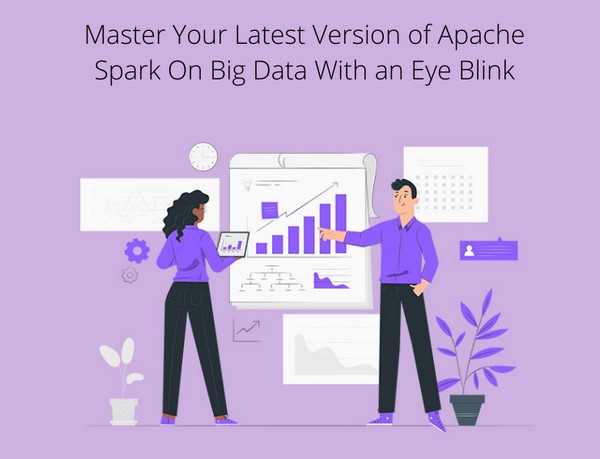Introduction
Tehnology fanatics enjoy staying updated with emerging technology, especially when something new in the world of technology is published. Big data is the most recent addition to the information system industry. For every powerful information system specialist, data analytics online training has been one of the most lusted practices. When Apache Spark was first out, it was in high demand. Let us imagine that one is the most rigorous computing device in today’s technical environment.

In today’s world, technology advances in a matter of seconds. Before we end the day, we have a propensity to see the latest new Phone on the market. When it comes to building a reputation for yourself in the work market, big data is the first name that comes to mind. Hadoop or Spark is a free software platform that is designed primarily for applying big data technology. Big Data, on the other side, is a relatively recent term that is being commonly used around the board. This new tech is commonly utilized in a variety of fields, including agriculture, science, and manufacturing. Big Data is a discipline that deals with methods for analyzing, routinely extracting knowledge from, or generally dealing with databases that are quite big and complicated for conventional big data consulting and analytics solutions systems to handle.
Apache spark – Key term explained
Companies use data to inform and affect actions, as well as to develop info goods and services including advice, forecasting, including healthcare products. The word “data science” has also been coined to describe the set of skills needed by organizations to improve such functions.
Apache Spark is a general-purpose cloud computing platform that is even incredibly quick and capable of generating astronomically large Web services. The machine runs programs up to a million seconds stronger in storage as compared to Hadoop MapReduce Framework. It is thirty times better than Map Reduce in terms of disc efficiency. Spark has a number of example programs in Linux, Pip, and Scala. In comparison, the framework is designed to accommodate a diversity of larger-level features, including immersive SQL server, MLlib (for artificial intelligence), processed graphs), hierarchical data analysis, and broadcasting. Adaptable data warehouses are a modern fault-tolerant framework developed by Spark for in-batch computation. This is often referred to as a kind of limited decentralized memory space. If we’ve had a spark up and running, we’d like to see a mysterious API for consumers to be able to deal with large data. If you’re looking for more information on Data and how to fix it, look no further.
Big Data Analysis with Apache Spark
The aim of Spark Databases, which was first implemented in Spark 1.6, is to include an API that enables people to efficiently communicate transforms on data objects whilst retaining the efficiency and advantages of this powerful Spark SQL object model.
DataFrame APIs can integrate to Datasets Functionalities beginning in Spark 2.0, trying to unite data analysis resources for certain databases. Developers also have fewer definitions to understand or recall as a result of the integration, and they may operate using a particularly small and form API named Dataset. The Spark Database is an acronym for a Dataset list of common items, with a Row being a standard untyped JVM entity. A database, on the other hand, is a list of heavily JVM objects specified by a category class in java and Scala.
Data analytics is among the most dynamic research fields, with numerous barriers and requirements for new technologies which impact a variety of industries. To plan, execute, and maintain the requisite pipeline and formulas to satisfy the computational needs of large statistical analysis, an effective architecture is needed. In this respect, Apache Spark has established itself as a single-engine for large-scale data processing through multiple workloads. It has pioneered a radical approach to computer science in which a broad variety of data challenges could be addressed utilizing a single computing engine and particular operating systems. With its sophisticated in-memory instruction set and outermost repositories for modular computer vision, statistical modeling, streaming, and hierarchical data analysis, Apache Hadoop has risen to prominence as an illegitimate platform for data analytics.
For big data analytics, a single-engine is required
Apache Spark is the next-gen engine for big data analytics, that will help with data preprocessing, suggests appropriate, immersive analytics, as well as organizational analytics, among several other things. Data can be analyzed with the help of a normal guided acyclic graph (DAG) of regulators having a large number of transitions and behavior with Apache Spark. It produces around the network dynamically and behaviors have influenced the tasks that must be performed. It includes a number of modifications that help with data pre-processing, which is particularly useful when large databases become increasingly challenging to analyze.
Conclusion
It is clear that the Apache Spark initiative, which is funded by certain academic and industrial ventures, has by now made a significant input to addressing core issues of big data. About the fact that there are many initiatives for Apache Spark benchmark tests, the big data ecosystem also requires further in-depth evaluations of Apache Spark’s output in multiple situations.
